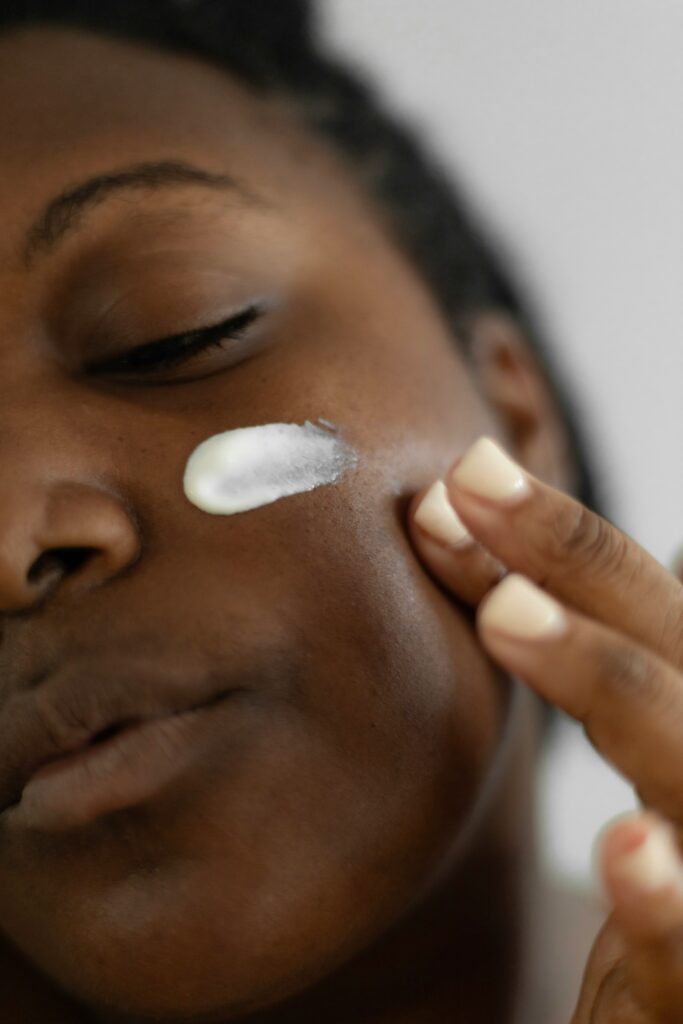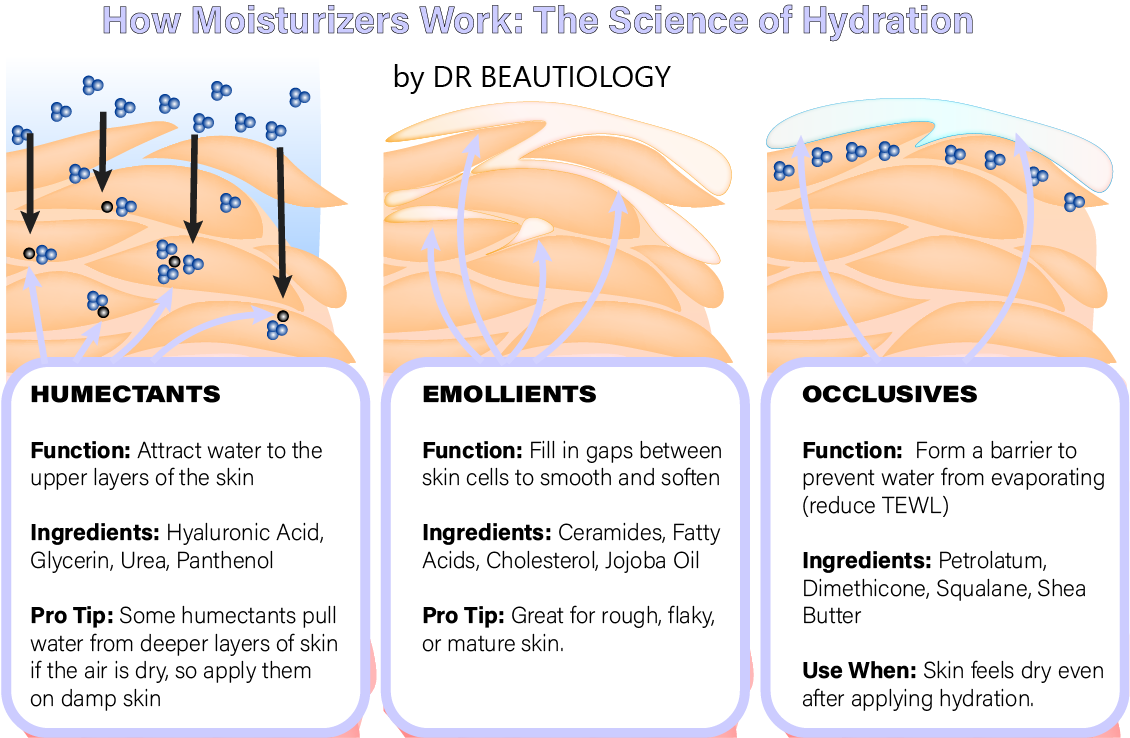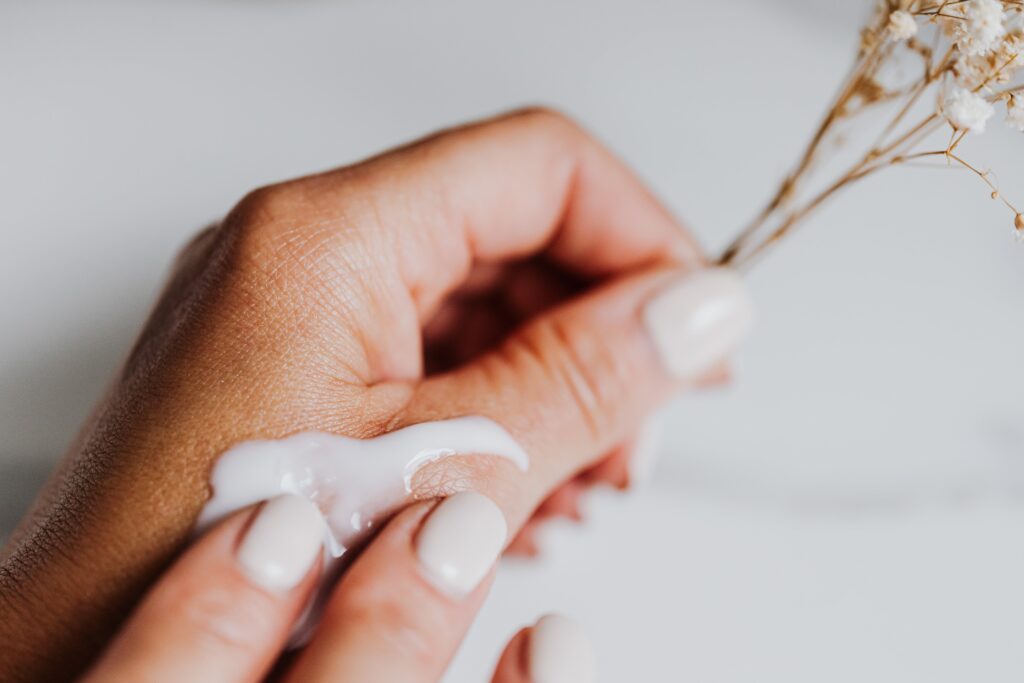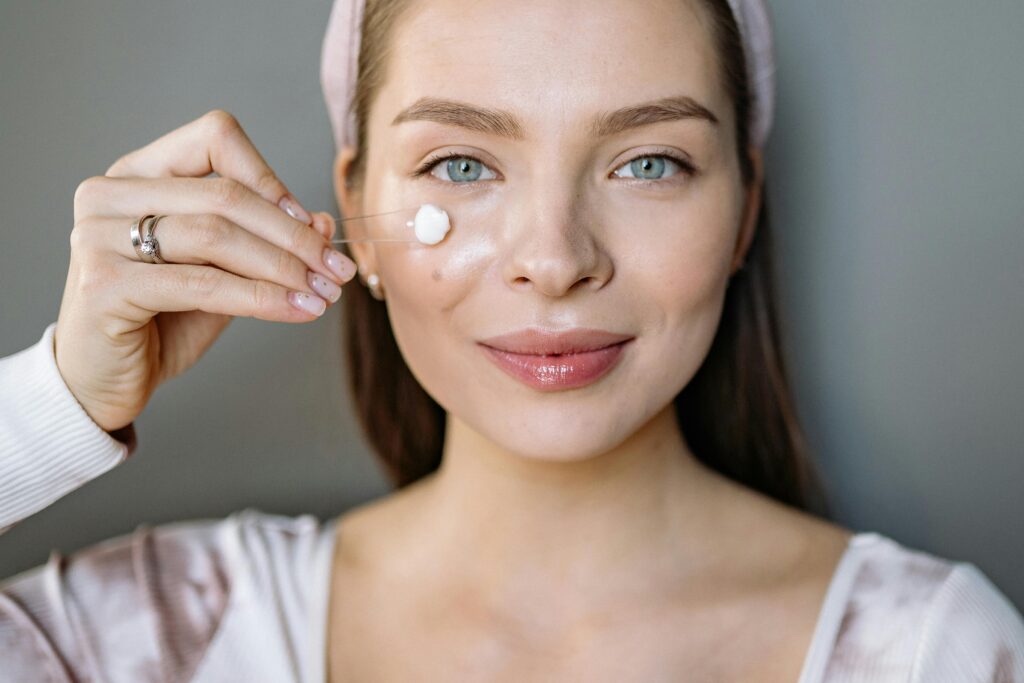Why Your Moisturizer’s Ingredients Matter
The skincare industry is flooded with moisturizers that promise deep hydration, barrier repair, and even anti-aging benefits. But how do you know if these claims are backed by science or just clever marketing? Are all moisturizers formulated equally, or are some little more than water and filler ingredients with a fancy price tag?
A high-quality moisturizer does more than just add moisture—it must prevent Transepidermal Water Loss (TEWL), restore skin lipids, and support skin function. The right formula nourishes, strengthens, and protects the skin barrier, reducing irritation and preventing dehydration. However, not all brands are transparent about their formulations, and some commonly included ingredients may not work as effectively as advertised.
This article breaks down must-have ingredients in an effective moisturizer, explaining what peer-reviewed research actually says and the risks that brands don’t always disclose. If you’ve ever wondered whether your moisturizer is doing enough for your skin, keep reading.
Quick Takeaway: The best moisturizers are a balanced mix of occlusives, humectants, and emollients. Choosing the wrong ingredients can lead to “skin dependence”, irritation, or even dehydration instead of true hydration.
- Why Your Moisturizer's Ingredients Matter
- Occlusives: The Ultimate Moisture Lock (But Not for Everyone?)
- Humectants: The Hydration Magnets (But Are They Always Effective?)
- Emollients: The Skin Barrier Repair Experts
- Anti-Inflammatory & Skin-Soothing Ingredients (Do They Really Work?)
- Antioxidants: Essential or Just a Marketing Gimmick?
- Conclusion: What Makes a Truly Great Moisturizer?

Occlusives: The Ultimate Moisture Lock (But Not for Everyone?)
Occlusives are the heavy-duty moisture sealers in skincare. They work by forming a hydrophobic (water-repelling) layer over the skin, preventing water from evaporating. Think of occlusives as a plastic wrap that traps hydration—ideal for dry, sensitive, or compromised skin types.
Key Occlusive Ingredients to Look For:
- Petrolatum (Vaseline): The most effective occlusive, reducing TEWL by up to 98%.
- Dimethicone: A lightweight, breathable silicone-based occlusive, often used in acne-prone formulations.
- Shea Butter & Squalane: Natural occlusives with additional anti-inflammatory and skin-conditioning properties.
- Lanolin: A wax secreted by sheep to protect their wool—great for deep moisturization but a known allergen for some.
Why You Need Occlusives:
- Prevents moisture loss, which is especially crucial in cold, dry climates.
- Creates a protective barrier, reducing irritation for eczema, psoriasis, and post-procedure skin.
- Works well for aging skin, which naturally produces fewer lipids.
Potential Downsides:
- Petrolatum and mineral oil are highly effective, but they don’t provide any hydration on their own. They must be paired with humectants to work optimally.
- Lanolin can trigger allergic reactions, leading to redness, itching, and irritation.
- Heavily occlusive products can be pore-clogging, making them less suitable for oily or acne-prone skin.
Pro Tip: If you have acne-prone or oily skin, opt for light occlusives like dimethicone rather than petrolatum. Layering a humectant underneath an occlusive provides hydration without clogging pores.

Humectants: The Hydration Magnets (But Are They Always Effective?)
Humectants are ingredients that draw water into the skin, either from the deeper layers (the dermis) or from the surrounding air. If you’ve ever applied a hyaluronic acid serum and felt your skin instantly plumper, that’s humectants at work.
However, humectants are double-edged swords. In humid environments, they attract moisture from the air, but in dry climates, they may pull water from the deeper layers of your skin instead, potentially worsening dehydration if not properly sealed with an occlusive.
Key Humectant Ingredients to Look For:
- Hyaluronic Acid (HA): A superstar ingredient that can hold 1,000 times its weight in water, plumping skin and reducing fine lines.
- Glycerin: More stable and cost-effective than HA, glycerin is one of the most effective humectants found in nearly all quality moisturizers.
- Urea: A dual-function ingredient—hydrates and gently exfoliates dead skin cells, improving texture over time.
- Panthenol (Pro-Vitamin B5): A humectant that hydrates while reducing redness and inflammation, making it great for sensitive skin types.
Why You Need Humectants:
- They increase hydration and give the skin a dewy, youthful look.
- Help improve skin elasticity, reducing the appearance of fine lines and wrinkles.
- Work well for all skin types, especially dehydrated skin that lacks water (not to be confused with dry skin, which lacks oil).
Potential Downsides:
- Humectants without occlusives can worsen dryness in arid climates by pulling water from deeper layers of the skin instead of the air.
- Urea and lactic acid in high concentrations can be irritating, causing stinging or redness, particularly for sensitive skin.
- Not all hyaluronic acid molecules penetrate the skin—larger molecules sit on the surface, while low molecular weight HA penetrates deeper.
Pro Tip: To avoid dehydration, always apply humectants before an occlusive to lock in moisture. If using hyaluronic acid, make sure to apply it to damp skin for maximum hydration.

Emollients: The Skin Barrier Repair Experts
If occlusives are the lock and humectants are the key to hydration, then emollients are the foundation that keeps everything smooth and functional. Emollients work by filling in tiny cracks in the skin barrier, improving texture and reinforcing skin resilience. They’re especially beneficial for dry, sensitive, and aging skin.
Key Emollient Ingredients to Look For:
- Ceramides – The skin’s natural lipid glue, essential for a strong and healthy barrier.
- Fatty Acids (Linoleic, Oleic Acid) – Key players in lipid repair and hydration.
- Cholesterol – Works synergistically with ceramides and fatty acids to mimic skin’s natural barrier.
- Squalane – A lightweight, non-comedogenic emollient that mimics natural skin oils.
Why You Need Emollients:
- They restore lost lipids, reducing roughness and dryness.
- Prevent irritation and sensitivity by reinforcing the skin’s protective barrier.
- Improve elasticity and resilience, which is particularly important for aging skin.
Potential Downsides:
- Not all oils are created equal – Some, like coconut oil, can be comedogenic and clog pores in acne-prone skin.
- Ceramides work best in combination with cholesterol and fatty acids – standalone ceramide products may not be as effective.
Pro Tip: If your skin feels tight even after applying moisturizer, it may lack emollients. Look for formulas with ceramides, squalane, and cholesterol for a barrier-repairing boost.

Anti-Inflammatory & Skin-Soothing Ingredients (Do They Really Work?)
Skin inflammation is at the root of many issues, from acne and redness to premature aging. Including anti-inflammatory and soothing agents in a moisturizer can help calm irritation and prevent chronic skin stress.
Key Soothing Ingredients to Look For:
- Niacinamide (Vitamin B3) – Reduces redness, strengthens the skin barrier, and minimizes hyperpigmentation.
- Colloidal Oatmeal – FDA-approved for eczema relief, known for its skin-calming properties.
- Centella Asiatica – Speeds up wound healing and soothes inflammation.
- Allantoin – A plant-derived ingredient that promotes skin renewal and reduces irritation.
Why You Need These Ingredients:
- Calm redness and sensitivity, particularly for rosacea and eczema-prone skin.
- Help reduce post-inflammatory hyperpigmentation (PIH) after breakouts.
- Reinforce the skin barrier, making it more resistant to environmental stressors.
Potential Downsides:
- Some plant extracts can trigger allergic reactions – Always do a patch test before using a new product.
- Niacinamide at high concentrations (>5%) can cause flushing in some individuals.
Pro Tip: If you’re prone to irritation, pair anti-inflammatory ingredients with a simple, fragrance-free formula to minimize risk of reactions.

Antioxidants: Essential or Just a Marketing Gimmick?
Antioxidants are essential for skin health, but not all of them work the way brands claim. They help neutralize free radicals, reducing oxidative stress that contributes to wrinkles, hyperpigmentation, and loss of elasticity.
Key Antioxidants to Look For:
- Vitamin C (L-Ascorbic Acid) – A powerhouse brightening agent, but unstable in many formulations.
- Vitamin E (Tocopherol) – Works synergistically with Vitamin C, boosting antioxidant protection.
- Coenzyme Q10 (Ubiquinone) – Helps reduce oxidative stress and support cell regeneration.
- Green Tea Extract (EGCG) – A natural anti-inflammatory antioxidant with proven skin-calming effects.
Why You Need Antioxidants:
- Protect against environmental damage (pollution, UV rays, blue light).
- Slow down premature aging by reducing collagen breakdown.
- Help in repairing skin after sun exposure and oxidative stress.
Potential Downsides:
- Vitamin C oxidizes quickly, becoming ineffective – Look for stabilized formulas or derivatives like magnesium ascorbyl phosphate.
- Not all antioxidants penetrate deeply enough to provide significant benefits – formulation matters more than just having the ingredient.
Fun Fact: Green tea extract has been shown in studies to reduce sebum production, making it a great ingredient for oily and acne-prone skin.

Conclusion: What Makes a Truly Great Moisturizer?
Choosing the right moisturizer isn’t just about hydration – it’s about long-term skin health. A well-formulated product should contain:
- Occlusives to prevent water loss.
- Humectants to draw in moisture.
- Emollients to smooth and repair the skin barrier.
- Anti-inflammatory agents to calm irritation.
- Antioxidants to fight oxidative stress and premature aging.
However, the best formulation depends on your skin type and environment. If you live in a dry climate, prioritize occlusives and emollients. If your skin is oily, go for lightweight humectants and antioxidants.
Key Takeaways:
- A moisturizer should be more than just a hydrator – it should actively support the skin barrier and prevent inflammation.
- The best formulations balance hydration, repair, and protection.
- Watch out for marketing gimmicks – not all ingredients work equally well for everyone.
- Patch testing is key – even the most beneficial ingredients can cause reactions in some individuals.
Final Thought: The best moisturizer for you is one that aligns with your skin’s needs, not just what’s trending. Look beyond marketing claims and focus on science-backed ingredients to make informed choices!
Would you like personalized moisturizer recommendations based on your skin type? Drop a comment below or take our skincare quiz to find your perfect match!
Talk to you soon!
Dr Bozica
References:
Quick q—what’s the best mix if I have oily but dehydrated skin? I always get confused with occlusives vs emollients.
Hi Mira! Focus on light formulations with glycerine or hyaluronic acid. These hydrate without adding oil. For emollients look for squalene and light oils (like rosehip, jojoba, grapeseed). Avoid coconut/ avocado oils. it’s best to avoid heavy occlusive, like mineral oils, petrolatum, paraffin, Cera Microcristallina/Microcrystalline Wax.
This is SO helpful. I’ve been buying moisturizers just based on texture 😅 time to start actually reading ingredient labels!